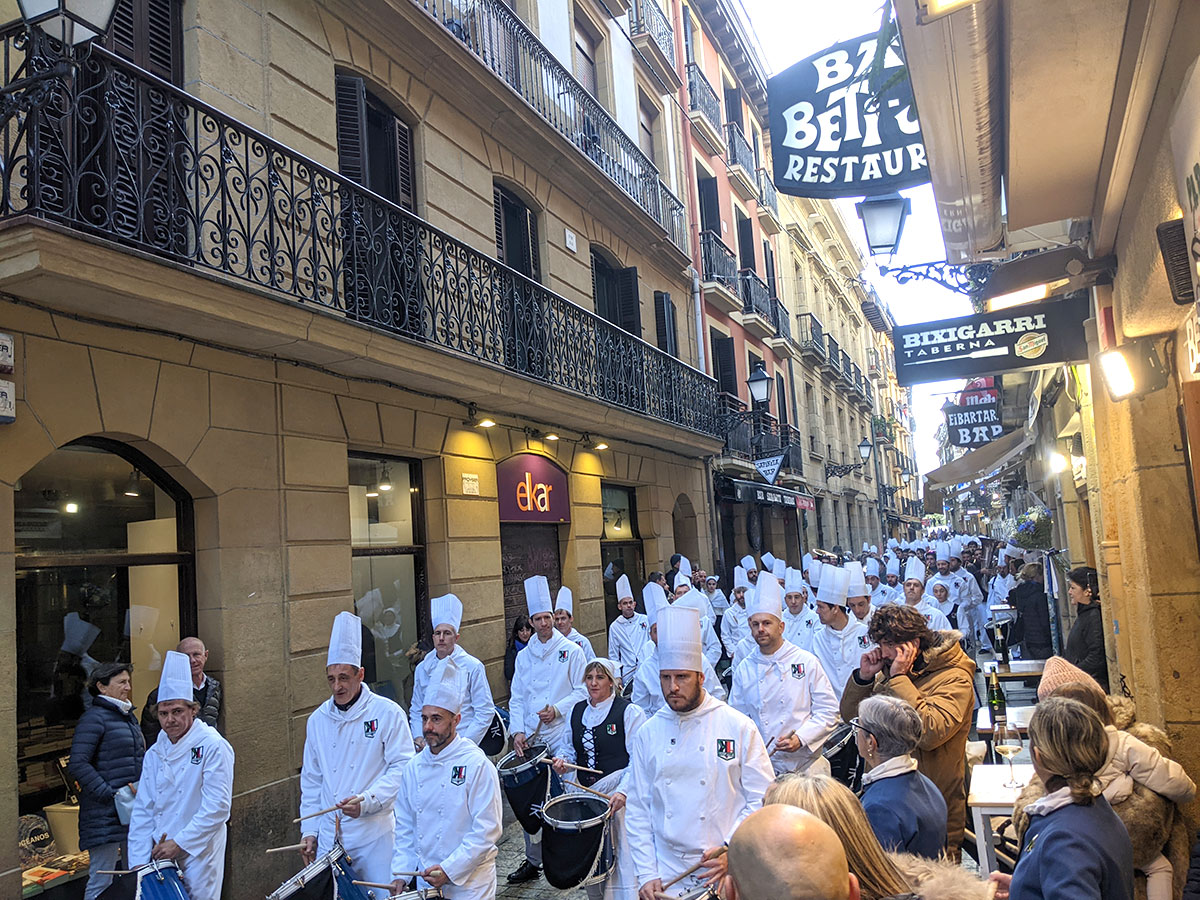The Basque Country is a region recognised for its unique culture. A lot of that stems from Basque traditions that are intrinsically linked to modern day life in Euskadi.
A lot of the Basque traditions come from rural areas and the farmhouses. They historically formed the social structures of Baque society.
Today, these traditions are evident in frontons (places where Basque pelota is played), public squares in the Basque Country, and arguably most prominent in festivals and social events.
In this article, we’ll run through some of the most popular Basque traditions.
8 Weird and Wonderful Basque Traditions
Below are some of the most typical Basque traditions that are still present and influential in today’s modern society.
1. Basque Sports
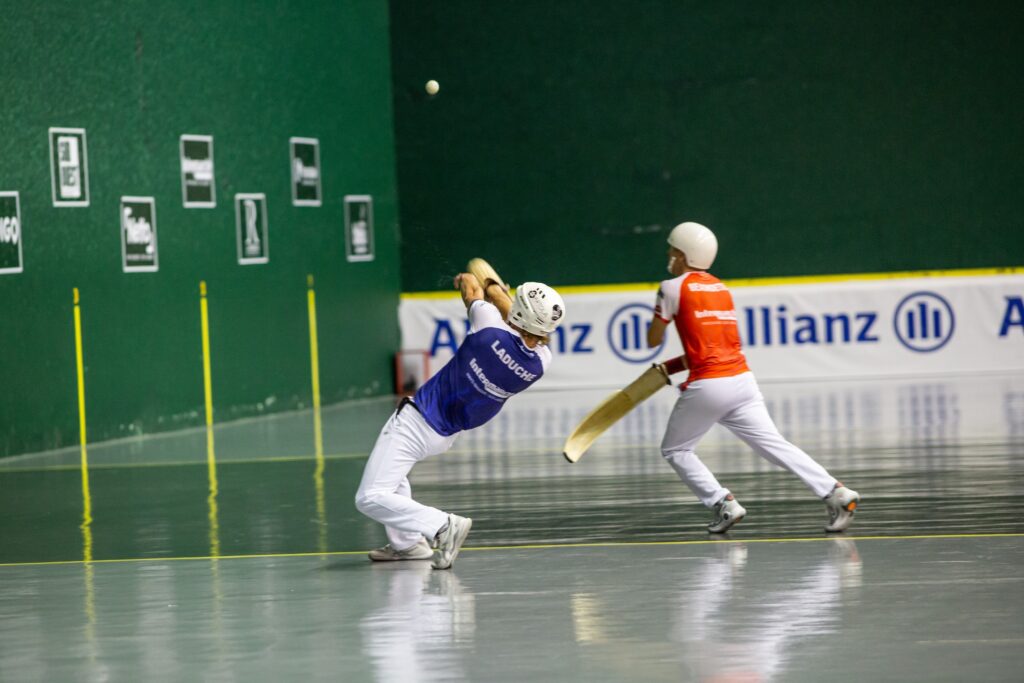
For hundreds of years the Basque people have engaged in their own traditional sports.
There are many different traditional Basque sports, but most typically originate from the rural areas and farms. Here, the farm workers would add a competitive spin to mundane everyday tasks that eventually turned into outright sports.
In fact, overtime they’ve evolved and become more professional, with official governing bodies and professional sportsmen and women.
Herri Kirolak are typically the most traditional, referred to as the Basque rural sports.
They traditionally take place in the main plazas (squares) in Basque towns and their popularity revolved around betting.
There are also other sports that are rarely practised outside the Basque Country. Basque pelota and Traineras regattas (Rowing) are commonplace in Euskadi, but you’ll struggle to find these elsewhere in the world.
2. Basque Festivities
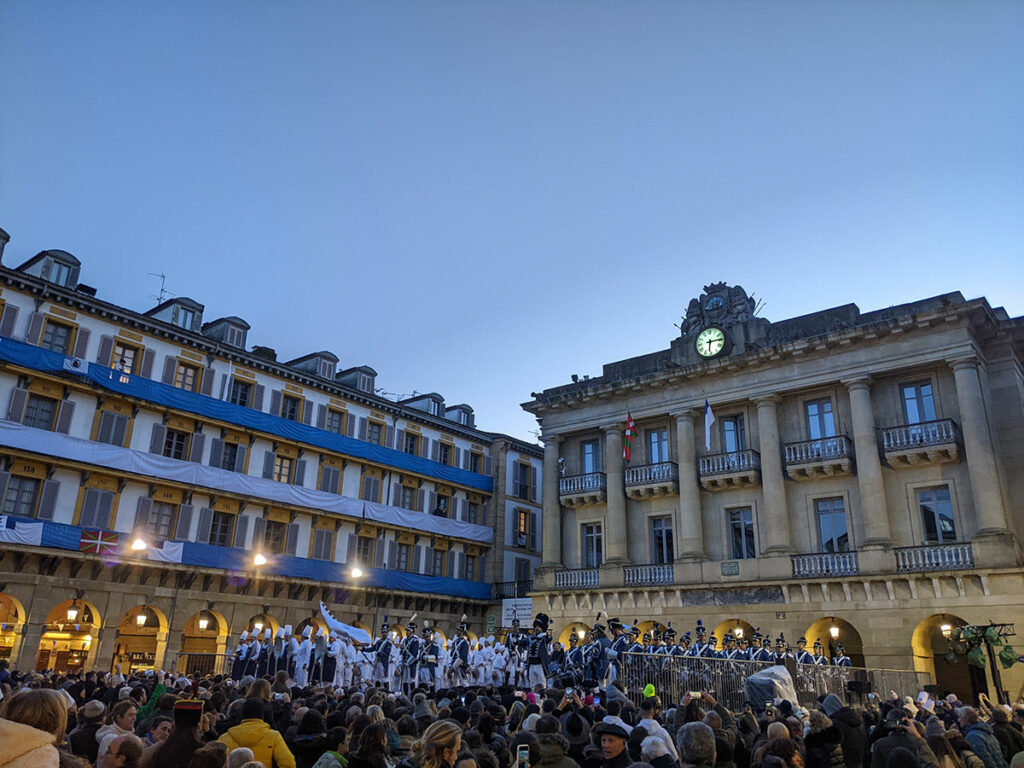
If you’ve been to the Basque Country before, you’ll know that it feels like there’s always some sort of festival happening in the streets.
The Basque people love a good party!
But they celebrate certain traditions a little differently than perhaps elsewhere in the world.
Festivals like La Tamborrada in San Sebastian, where people dress up as chefs and soldiers and bang drums for 24 hours, are impressive spectacles and fairly unique to this part of the world.
Then you have events such as the worldwide famous bull run at San Fermin in Pamplona. Whenever you decide to come, there’s bound to be some festival nearby.
3. Cuadrillas

Cuadrillas are groups of friends. That may not sound like much, or anything different to life elsewhere in the world, but cuadrillas are at the heart of the Basque people’s social life.
The difference between a Basque cuadrilla and a group of friends elsewhere in the world, is that cuadrillas come with some unwritten rules!
In short, they are usually formed at a very young age (typically at school), and you can only be a member of one cuadrilla. And once you’re in a cuadrilla, that’s it. It’s set. For life!
As part of a cuadrilla, you have duties to include the rest of the cuadrilla in your social plans.
And god forbid, you cannot invite anyone outside of the cuadrilla into the cuadrilla!
4. Basque music and song
Traditional Basque music was typically associated with the rural area of the Basque Country.
The music, produced in Euskara (the Basque language), could be categorised as Basque Folk music. It is composed of marches and dance rhythms that reflect the traits of Basque society and traditions.
With it comes a number of music instruments that originate from the Basque Country or are typically only used in this region.
The Txalaparta is perhaps the most common. It’s a wooden xylophone-like percussion instrument designed for two musicians to play at the same time. It’s even managed to work its way into mainstream music through bands like Crystal Fighters.
Other examples include the txistu (a pipe instrument), the tamboril (drum used in marches such as La Tamborada) and the alboka (a woodwind instrument).
5. Gastronomic Societies
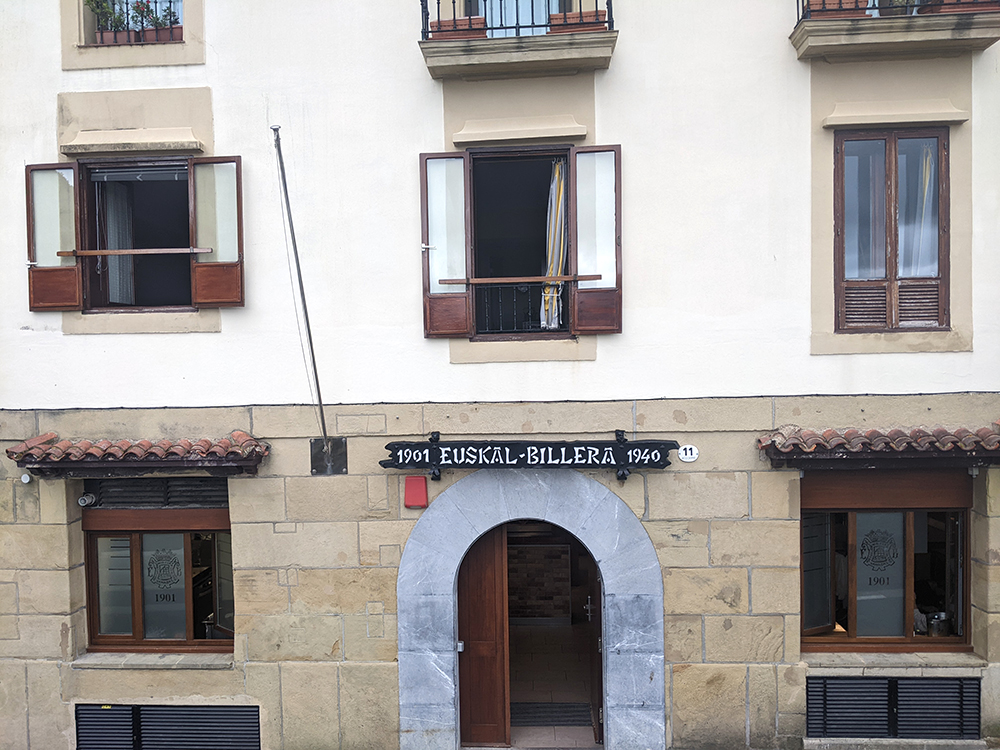
The Basque Country is widely known as a foodie’s paradise! And perhaps the most influential factor in the region’s reputation for quality food is the abundance of traditional gastronomic societies that exist.
Txokos or sociedades (gastronomic societies) is a concept where people get together to cook lunch or dinner. It’s sort of a restaurant-come-private diners club where cuadrillas or families cook for one another and enjoy a long meal.
Gastronomic Societies came into existence in the mid-19th century, originating in San Sebastian.
Back then, the city was heavily influenced by royals and nobles. Eating out became expensive, so the sociedades would become places where men (women were forbidden) could go for extended lunches to talk about politics and business.
And their influence on the Basque cuisine has been huge. They are the birthplaces of many of the traditional Basque dishes we enjoy today.
6. Basque Food (Pintxos)
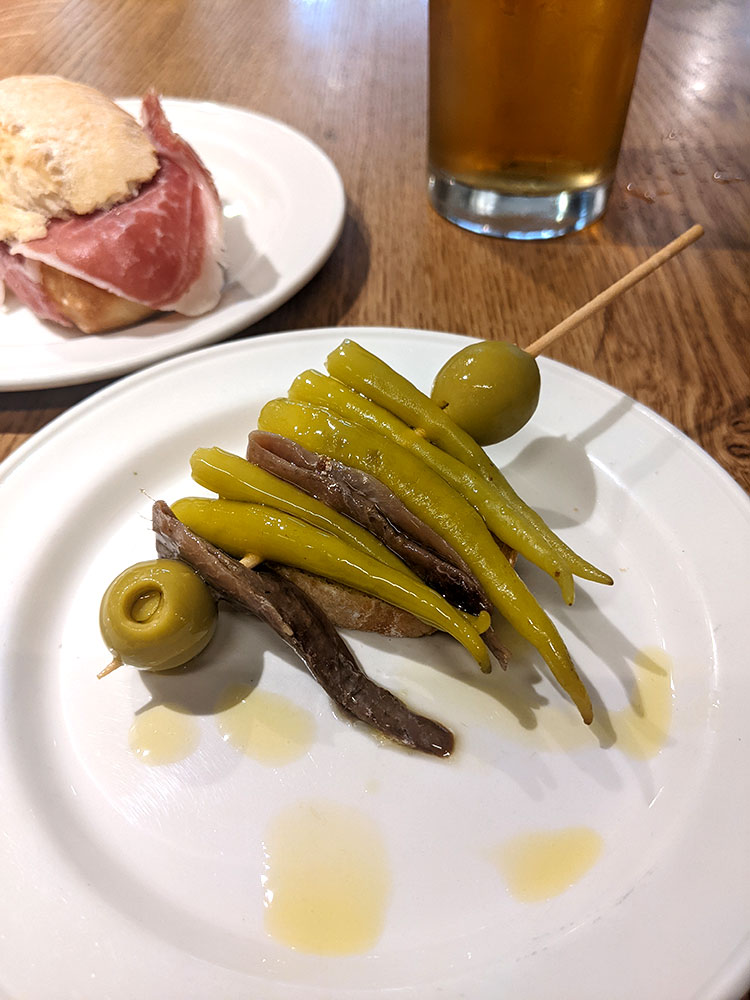
Pintxos are small, appetiser-sized portions of food that are usually served at bars.
They are different from the traditional Spanish tapa in that they are ordered separately to your drink (whereas tapas are generally served for free when you order a drink).
Pintxos were born in the Basque Country, and there’s no better place to try them than in San Sebastian.
Traditionally people go from bar to bar on a “pintxo crawl”, trying the best each bar has to offer.
7. Dance (Aurresku)
On a night out in the Basque Country, dancing may not appear very popular. But in fact, it’s an activity that’s deeply rooted into the Basque culture.
Traditional, ritual and religious folk dances form part of most festivities and social gatherings in the Basque Country.
One of the most popular types of dancing is the Aurresku, which nowadays takes place after the ceremony at a wedding. This usually involves a dancer or group of dancers performing a complex, demanding dance to traditional Basuqe music.
There are however over 400 traditional Basque folk dances, each with their own story.
8. Olentzero (Basque Father Christmas)

Olentzero is best described as the Basque Father Christmas.
He’s celebrated all over the Basque Country, alongside Father Christmas and also brings children presents on the 24th December. Many Basque (and Spanish families) also celebrate the Three Kings, who typically bring their gifts on the Epiphany ( 6th January).
To the rest of the world, Olentzero may not appear as a friendly Christmas character. He is depicted as a Basque peasant. Typically he wears Basque farmers clothing, with a Basque beret and usually carries a bottle of wine!
His companion’s character (Mari Domingi) is arguably more peculiar, dressed in a Mediaeval Basque dress.
Whilst they may not appear as the friendliest bunch, they are presented as loveable characters. Children line up to see Olentzero before Christmas and ask him for gifts, similar to childrens would with Santa Claus elsewhere in the world.
